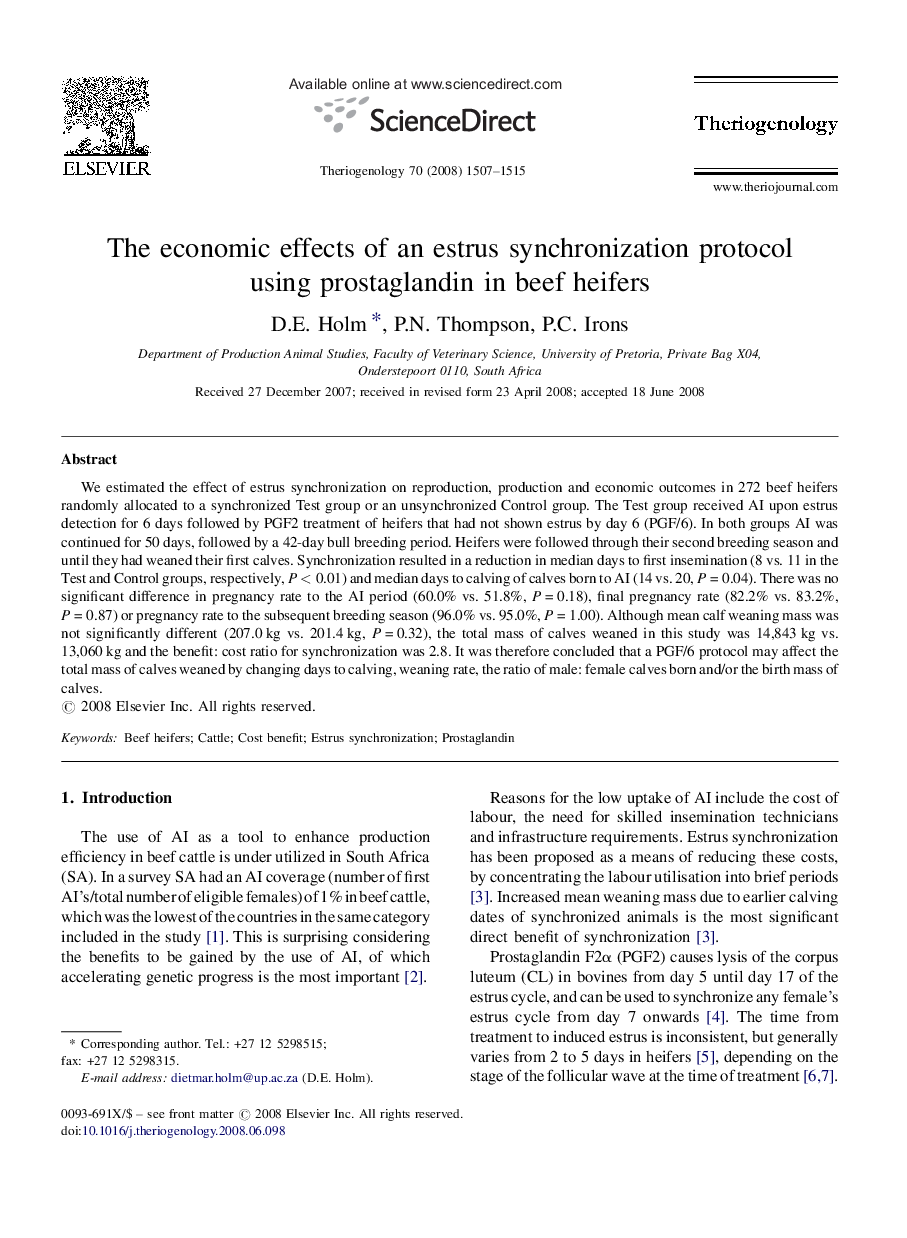| Article ID | Journal | Published Year | Pages | File Type |
|---|---|---|---|---|
| 2095681 | Theriogenology | 2008 | 9 Pages |
We estimated the effect of estrus synchronization on reproduction, production and economic outcomes in 272 beef heifers randomly allocated to a synchronized Test group or an unsynchronized Control group. The Test group received AI upon estrus detection for 6 days followed by PGF2 treatment of heifers that had not shown estrus by day 6 (PGF/6). In both groups AI was continued for 50 days, followed by a 42-day bull breeding period. Heifers were followed through their second breeding season and until they had weaned their first calves. Synchronization resulted in a reduction in median days to first insemination (8 vs. 11 in the Test and Control groups, respectively, P < 0.01) and median days to calving of calves born to AI (14 vs. 20, P = 0.04). There was no significant difference in pregnancy rate to the AI period (60.0% vs. 51.8%, P = 0.18), final pregnancy rate (82.2% vs. 83.2%, P = 0.87) or pregnancy rate to the subsequent breeding season (96.0% vs. 95.0%, P = 1.00). Although mean calf weaning mass was not significantly different (207.0 kg vs. 201.4 kg, P = 0.32), the total mass of calves weaned in this study was 14,843 kg vs. 13,060 kg and the benefit: cost ratio for synchronization was 2.8. It was therefore concluded that a PGF/6 protocol may affect the total mass of calves weaned by changing days to calving, weaning rate, the ratio of male: female calves born and/or the birth mass of calves.
